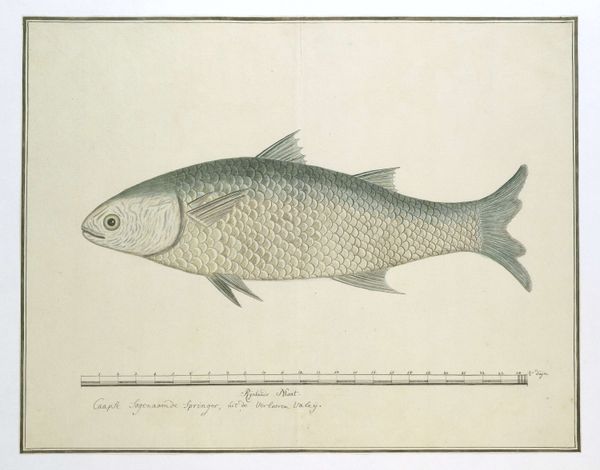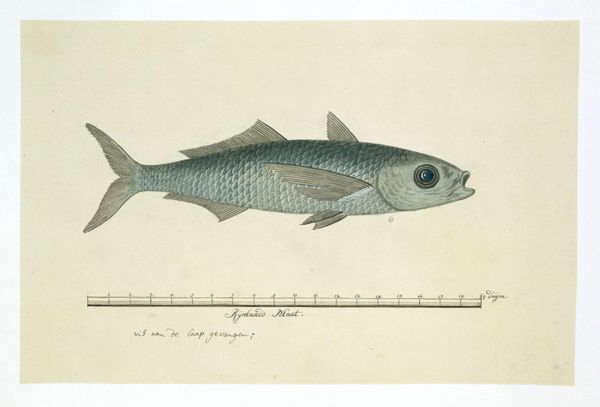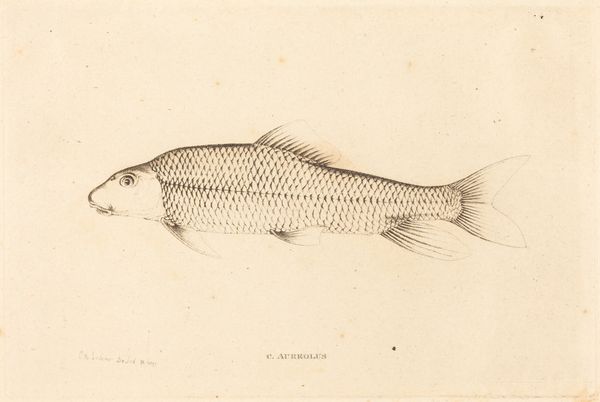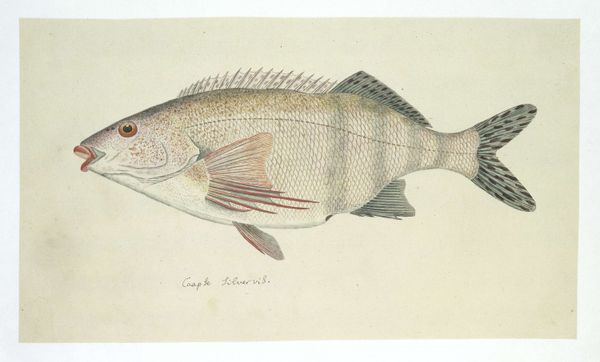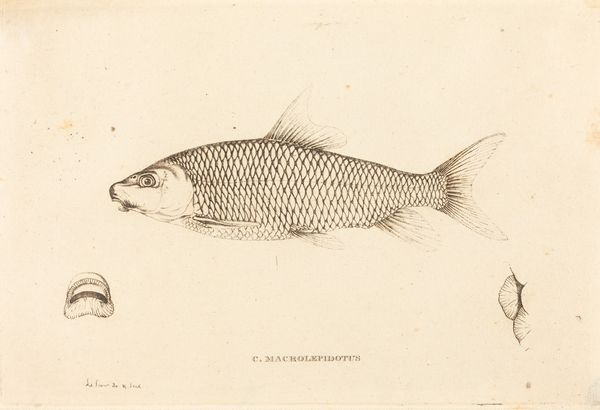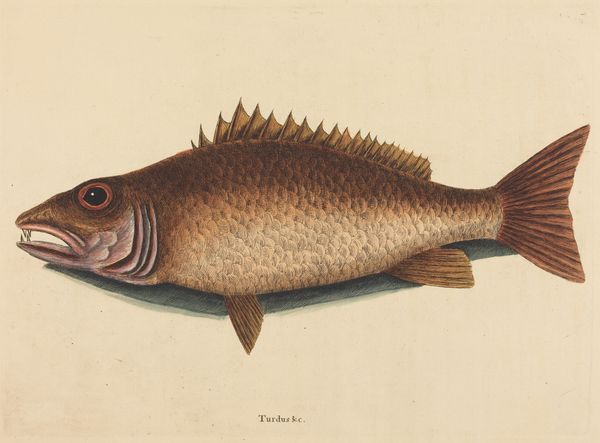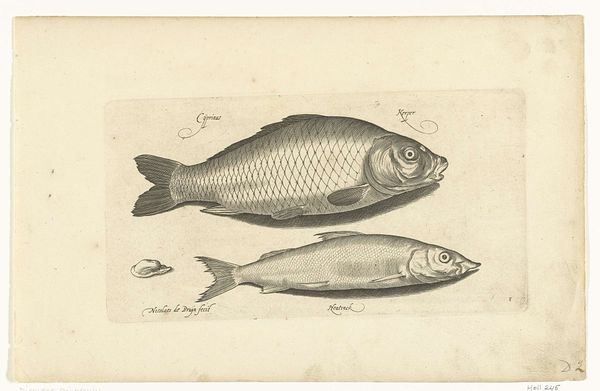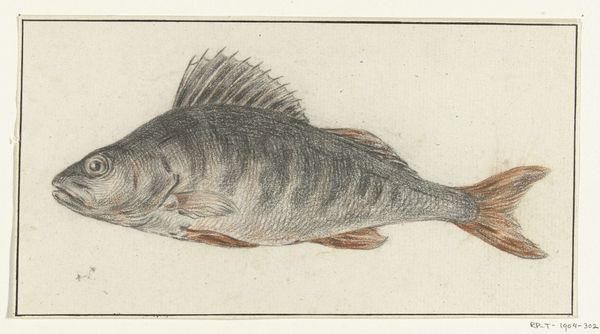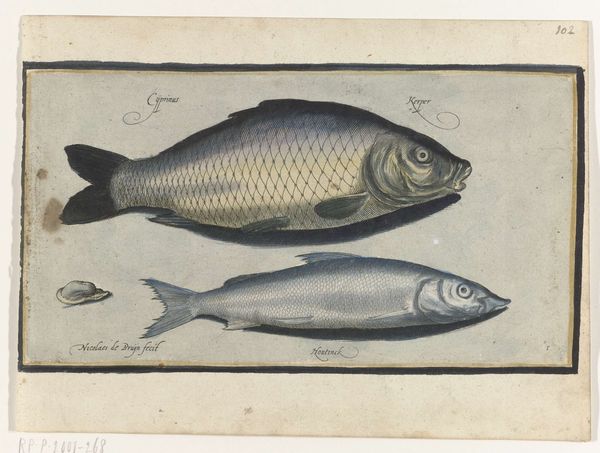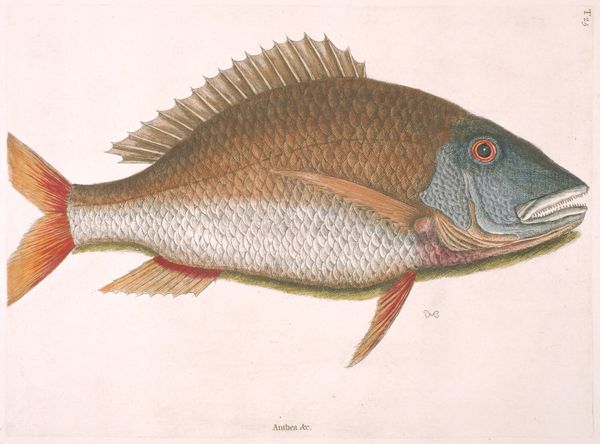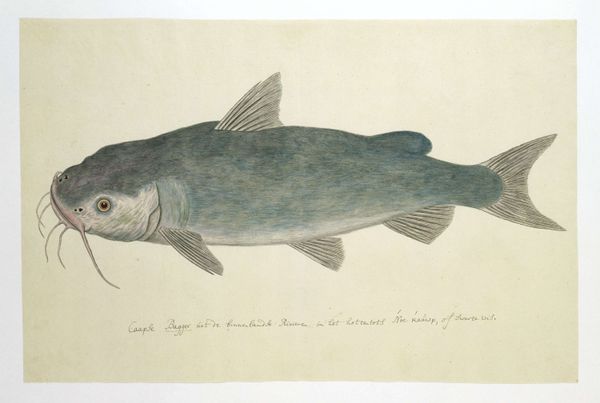
drawing, watercolor
#
drawing
#
narrative-art
#
watercolor
#
watercolour illustration
#
realism
Dimensions: height 660 mm, width 480 mm, height 171 mm, width 300 mm, height mm, width mm
Copyright: Rijks Museum: Open Domain
Curator: Immediately, I'm struck by the precision—look at the calculated details. This watercolor drawing, likely from 1777 to 1786, by Robert Jacob Gordon depicts a "Labeo umbratus," also known as a Cape Moggel. Notice how meticulously each scale has been rendered, and then consider the choice to include the ruler right beneath it—presumably documenting its length. Editor: It feels both clinical and oddly melancholic, doesn't it? The fish appears quite solitary against the plain background, its coloring muted... It raises questions for me about our historical and ongoing relationship to the natural world in Southern Africa, particularly the colonial gaze embodied here by Gordon, and its impact on biodiversity and indigenous knowledge systems. Curator: Precisely! As a record, though, what strikes me are Gordon's artistic processes: the use of watercolor and drawing combined with the inclusion of standardized measuring tools emphasizes the act of documentation inherent in the expedition itself. And even a kind of proto-scientific understanding and rendering of local aquatic life that required careful observation. Editor: But we can also analyze whose narratives are centered and whose are marginalized through this process. What agency does this Moggel have in its own representation? And what stories and ecological wisdom possessed by indigenous communities are lost or appropriated during these expeditions and their accompanying artistic renderings? Curator: Well, the making of these records serves a specific colonial purpose—scientific, military, administrative—and it does transform a local specimen into something abstracted through taxonomy, categorization and a specific production method that's tied to watercolor on paper. Consider also what watercolors might have been accessible, where were they made, and the modes of consumption back then for them. Editor: I agree—it becomes crucial to analyze these images, considering both the visual details and the social frameworks from which they originated, encouraging audiences to delve into broader socio-political histories around race, class, gender, power dynamics, ecological exploitation and cultural extraction inherent in colonialism. This Moggel carries heavy histories. Curator: True, it's through understanding those histories we can see the artistic and scientific method for what it is - both as tool for exploring our world and for staking claim over it, and how both converge in this interesting and telling medium. Editor: Ultimately, art such as this provides an entryway into reconsidering the historical roots of contemporary power structures that continue to shape our ecological and cultural landscapes in complex ways.
Comments
No comments
Be the first to comment and join the conversation on the ultimate creative platform.
